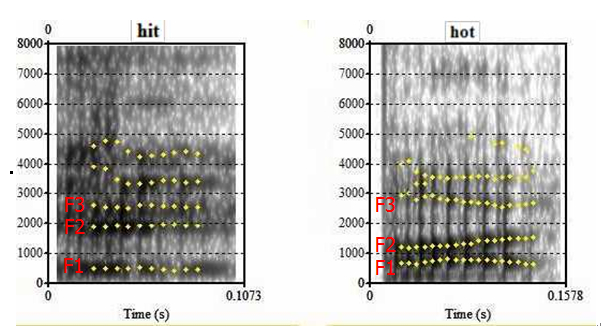The study of acoustic phonetics was greatly enhanced in the late 19th century. Acoustic phonetics is a subfield of phonetics which investigates the acoustic aspects of speech sounds, like the amplitude of a waveform, its duration, its fundamental frequency, and other properties of its frequency spectrum. Learning acoustic phonetics is of great significance for language teachers in their pronunciation teaching and speech therapists in assessment and planning of remediation.
Key concepts in acoustic phonetics (Adapted from Yavas, 2011:101)
There are four acoustic properties of speech sounds: frequency, time, amplitude, and formant.
- Frequency: Frequency relates to the individual pulsations produced by vocal cord vibrations for a unit of time. The rate of vibration depends on the length, thickness, and tension of the vocal cords, and thus is different for child, adult male and female speech. A speech sound contains two types of frequencies: fundamental frequency (F0) which relates to vocal cord function and reflects the rate of vocal cord vibration during phonation (pitch) and formant frequency which relates to vocal tract configuration.
- Time: Time as a property of speech sounds reflects the duration of a given sound.
- Amplitude: The amplitude is marked by darkness of the bands: the greater the intensity of the sound energy presents in a given time and frequency, the darker will be the mark at the corresponding point on the screen.
- Formant: A formant is a concentration of acoustic energy around a particular frequency in the speech wave. There are several formants, each at a different frequency, roughly one in each 1000Hz band. To put it differently, formants occur at roughly 1000Hz intervals. Each formant corresponds to a resonance in the vocal tract.
By convention, oral formants are numbered consecutively upwards from the lowest frequency. All vowels can be characterized by F1 and F2. For example, in the following spectrogram Figure 1.1 for the vowels in "hit"(/ɪ/) and "hot" (/ɒ/), we can find that F2 is higher (close to F3) in the first vowel (/ɪ/), but lower (close to F1) in the second vowel (/ɒ/). Vowels traditionally known as "front vowels" have F1 and F2 a good distance apart, like the first vowel /ɪ/ here. Vowels traditionally known as "back vowels" have F1 and F2 so close that they touch each other, like the second vowel /ɒ/ here.
Figure 1.1
Hits: 17381

